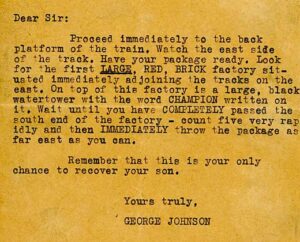
Nathan Leopold and Richard Loeb were close friends who attended the University of Chicago together in the early 1920s. They both came from affluent families and considered themselves to be abnormally intelligent. Their belief in their own abilities led them to feel that they were superior to others and not under the jurisdiction of the laws of common men.
Loeb yearned to commit what he thought was the perfect crime, a murder that was so calculated and so perfectly devised that no one could ever determine who had done it. He wanted a partner for his illegal activities, and when Leopold attempted to engage him in a sexual relationship, Loeb agreed on one condition, that Leopold join him in committing various crimes, all of which Loeb was sure would never be traced back to them.
The two men succeeded in perpetrating many criminal activities over the next few years, including arson, robbery, and vandalism. Loeb was still not satisfied, and continued to work out details of an undetectable murder. He even had a victim in mind, a distant cousin named Bobby Franks.
On May 21, 1924, Leopold and Loeb picked up the 14-year-old Franks in their car. Franks knew Loeb and was happy to go with the two young men. After a quick drive, Loeb stopped the car suddenly, gagged his cousin, and beat him over the head with a chisel. As Franks bled to death in the vehicle, the murderers casually drove on, even stopping for lunch before reaching their destination near some remote railroad tracks. They poured acid on the boy’s face to obscure his identity and shoved the body into a drain pipe.
That night, they typed up a ransom note and called the victim’s mother to say they had kidnapped her son. Before their letter arrived, railroad workers had discovered the body, and police officials began to investigate. The police found a pair of glasses that had been dropped by Leopold near the body and were able to discover who their owner was. Investigators also determined that the typewriter used for the ransom note belonged to Leopold.
The two killers were taken into custody, and both confessed to their crime. Although they were expected to receive the death penalty, renowned defense attorney Clarence Darrow took their case and brought the sentence down to life in prison, using a plea of insanity. Loeb was stabbed to death by a fellow inmate in 1936, and Leopold was eventually released in 1958.
